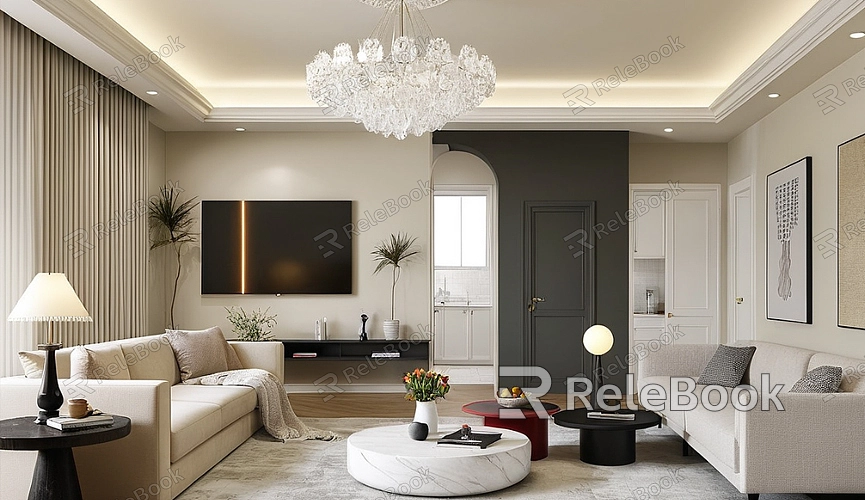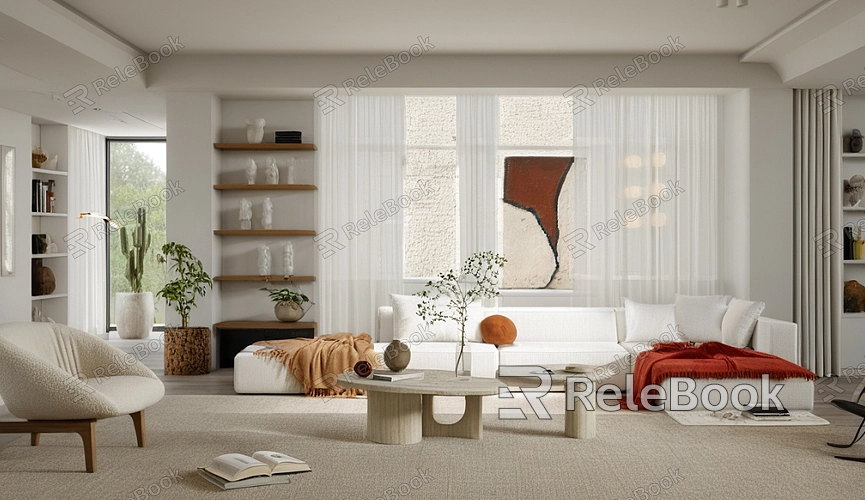How to Set UV Mapping Size in 3D Modeling?
UV mapping is a crucial step in 3D modeling and texture creation. It determines how a 2D texture is applied to the surface of a 3D model. Setting the right UV mapping size is not just a technical requirement but also part of the artistic process, as it ensures textures are applied naturally and efficiently. This guide explores how to set UV mapping size effectively, highlighting common methods and tips to optimize this process in real-world projects.

Basic Concept of UV Mapping
UV mapping is a technique used in 3D modeling to unfold a 3D object’s surface into a 2D plane, allowing textures to be applied. The model's surface is divided into smaller patches, which are then assigned UV coordinates that correspond to the texture. The “U” axis represents the horizontal direction, and the “V” axis represents the vertical direction in the UV coordinate system. This method allows textures to be accurately projected onto the 3D surface.
When setting UV mapping size, adjusting and controlling the size of these UV regions is one of the challenges faced by many 3D artists and designers. The size of UVs directly impacts the texture’s detail. If the UV area is too small, the texture will appear blurry, while a large UV region may waste valuable texture space.
Factors Affecting UV Mapping Size
Several factors need to be considered when adjusting UV mapping size. First, the texture resolution is closely tied to the size of the UV map. If the UV region is too small, the texture won’t display fine details; if the UV region is too large, it can lead to wasted texture space. This is especially critical in game and animation production, where texture space must be efficiently utilized.
Secondly, the complexity of the model also influences UV mapping. Complex models require more UV space to display details clearly, while simpler models may only need smaller UV regions.
Lastly, seamlessness and optimization of the UV map are important when determining size. An efficient UV unwrap should minimize seams and ensure they do not affect texture quality. Proper UV mapping also maximizes texture space without sacrificing detail.

How to Set UV Mapping Size
Setting UV mapping size involves several steps. Below are common methods and procedures for this process:
1. Choose an Appropriate Texture Resolution
First, determine the texture resolution you will use. Depending on the project, texture resolution needs can vary. For example, textures in games are typically lower resolution to ensure performance, while movies or high-quality renderings may require higher resolutions. Generally, the resolution of the texture should be proportional to the size of the UV mapping. Higher-resolution textures require larger UV regions.
2. Unwrap UVs
UV unwrapping is the process of flattening a 3D object’s surface. Depending on the shape and structure of the model, choose an appropriate unwrapping method. Common unwrapping methods include automatic unwrapping, manual unwrapping, and symmetrical unwrapping. During this process, avoid stretching and overlapping UVs, ensuring each patch maintains consistent proportions for a smooth texture application.
3. Adjust UV Regions
After unwrapping the UVs, you will need to adjust and arrange each UV patch. Typically, larger patches should be placed at the center of the UV map, while smaller ones can be placed along the edges or corners. This helps in effectively utilizing texture space and avoiding waste.
Additionally, maintaining consistency in UV regions is important. The size of each patch should be as uniform as possible. Extremely small or large patches can lead to texture distortion or inefficient use of space. Various tools can be used to check UV sizes and proportions to ensure they meet requirements.
4. Use Texture Density to Control UV Mapping Size
Texture density refers to the resolution per unit area. To ensure consistent texture quality across the model, maintain uniform texture density. You can control texture density by adjusting the scale of the UVs. By managing texture density across the model, you can ensure each part has enough detail, avoiding blurry or distorted areas.
5. Check for UV Seams and Errors
UV seams and misalignments are common issues. After unwrapping UVs, check for visible seam problems on the model’s surface. Optimizing seams can prevent unnatural texture transitions and improve the overall texture quality and appearance.
UV Mapping Optimization Tips
To make UV mapping more efficient and precise, here are some optimization tips:
1. Efficiently Use Texture Space
Texture space is limited, so it’s important to plan the UV layout efficiently, using every inch of the texture map. By arranging UV regions as tightly as possible, you can improve texture space utilization and reduce unnecessary empty areas and overlaps.
2. Adjust UV Proportions and Orientation
Adjusting the proportions and orientation of UVs can enhance the texture’s appearance. For example, aligning UV patches with the main direction of the texture can help reduce stretching or distortion. Consistency in the orientation of UV patches is also critical during this adjustment.
3. Use Advanced Tools and Plugins
Many 3D modeling software programs offer powerful UV mapping tools and plugins that can greatly improve the efficiency and quality of UV mapping. For example, programs like Maya and Blender provide automatic unwrapping, smart seam placement, and texture density optimization, helping designers quickly and efficiently complete UV mapping.
Setting UV mapping size is an essential part of 3D modeling and texture creation. By properly unwrapping and adjusting UVs, designers can ensure that textures are displayed clearly and effectively while avoiding wasted space and unnatural distortions. Mastering UV mapping techniques will significantly enhance the quality and efficiency of your work. If you need high-quality 3D models and textures, you can visit Relebook for professional 3D resources to support your creative journey.
FAQ
How can I tell if my UV mapping size is correct?
You can determine if the UV mapping size is correct by checking the texture’s appearance. If the texture looks blurry or stretched, the UV region may be too small. If there’s a lot of wasted space, the UV region may be too large. Adjust the size and proportion of the UVs to find the appropriate texture density.
How can I avoid seams after unwrapping UVs?
To avoid seam issues, layout UV patches strategically, making sure seams aren’t placed in prominent or visible areas. Use seamless textures, and apply edge treatment techniques such as softening the seams to reduce visible transitions.
How should UV mapping be handled with high-resolution textures?
For high-resolution textures, UV mapping should generally be larger. Ensure each patch’s proportions are consistent and scale the UV regions accordingly to preserve texture detail without losing clarity.
How can I increase UV mapping efficiency?
Improve UV mapping efficiency by using automatic unwrapping tools, optimizing patch arrangement, and adjusting texture density. Additionally, using UV editors for alignment and scaling can speed up the optimization process.

